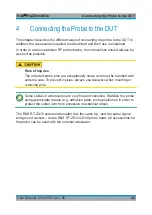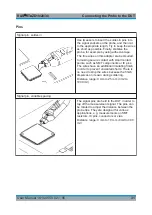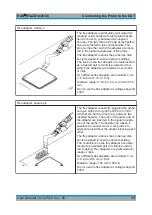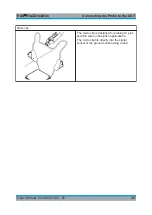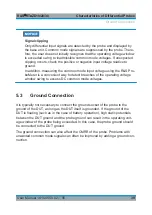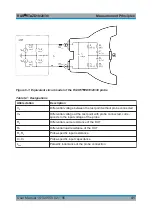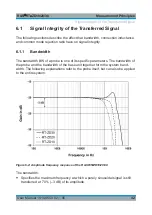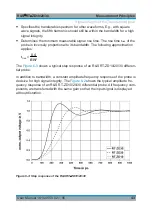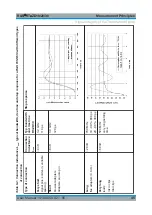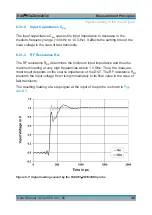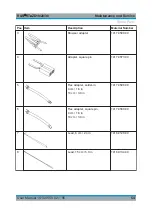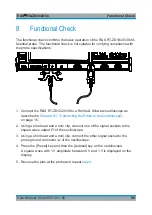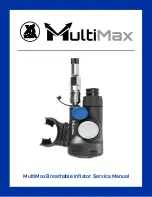
Measurement Principles
R&S
®
RT
‑
ZD10/20/30
44
User Manual 1410.4550.02 ─ 05
6.1.2
Connection Inductance
The connection inductance L
con
is caused by connecting the probe to the DUT. In
contrast to the probe-specific bandwidth, the connection inductance mainly
depends on the selected type.
The connection inductance:
●
Increases with the length of the connection and the size of the resulting loop
area A.
See
.
●
Reduces the usable bandwidth and causes ringing with signals having a short
rise time, due to a series resonance with the input capacitance.
●
Must be as small as possible (short lead length) to maintain high signal integ-
rity.
con
in
con
resonance
con
L
BW
C
L
f
A
L
1
to
al
proportion
2
1
≈
to
al
proportion
Figure 6-4: Ground connection and connection inductance using the example of R&S
RT-
ZD10/20/30
The
shows different types of connections between the probe and DUT
as well as the associated connection inductance L
con
. The table also includes typ-
ical bandwidth values, rise time values, and the step responses for each connec-
tion in conjunction with an R&S
RT-ZD30. For an R&S
RT-ZD20, typical band-
width and rise time values are smaller and limited to 1.5 GHz or 250 ps, respec-
tively. For an R&S
RT-ZD10, typical bandwidth and rise time values are also
smaller and limited to 1.0 GHz or 350 ps, respectively.
Signal Integrity of the Transferred Signal

